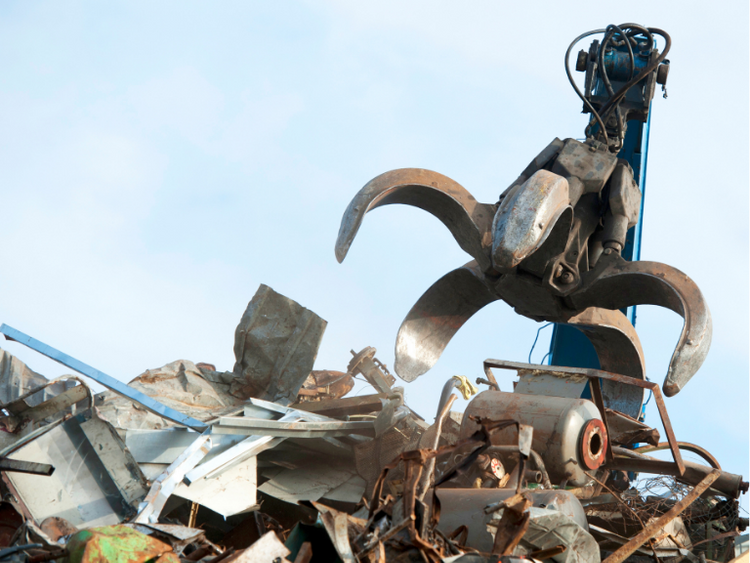Market

July 16, 2024
Section 232 tariffs to spark major shifts for the recycled metals community
Written by Gabriella Vagnini
The Section 232 tariffs, initially imposed by the Trump administration in 2018 to protect U.S. steel and aluminum industries, have undergone significant revisions under the Biden administration. These tariffs were designed to bolster national security by reducing dependency on foreign metals.
- Revised exclusion process: Effective July 1, 2024, the Bureau of Industry and Security (BIS) revised the Section 232 exclusions process, removing 12 General Approved Exclusions (GAEs)—six for steel and six for aluminum. This move aims to reduce reliance on foreign manufacturing and strengthen domestic production capabilities.
- New tariff policies: In April 2024, President Joe Biden announced measures to counteract unfair Chinese trade practices. These include increasing Section 301 tariffs on Chinese steel and aluminum to 25%, initiating investigations into Chinese maritime sectors, and enhancing efforts to prevent the misrepresentation of Chinese-origin steel transshipped through Mexico. Additionally, tariffs on EVs and lithium-ion EV batteries were significantly increased.
- Reimposition on South American imports: The U.S. has reinstated Section 232 tariffs on steel and aluminum imports from South America to protect the domestic market, specifically targeting products from Brazil and Argentina.
Challenges for the recycled metals industry
- Increased regulatory compliance: Businesses must adapt to new regulations, which can incur additional administrative and operational costs.
- Market volatility: Trade tensions and tariff changes lead to price fluctuations, complicating planning and investment decisions for industry stakeholders.
- Supply chain disruptions: Higher tariffs on imports may disrupt existing supply chains, leading to shortages and increased costs for scrap metal processors and manufacturers.
- Investment in technology: Significant investments in recycling technologies and infrastructure are necessary to meet increased domestic demand, posing challenges, especially for smaller businesses.
Potential opportunities for the recycled metals industry
- Boost in domestic demand: Tighter import regulations will increase the demand for domestically sourced scrap and recycled metals, benefiting local processors.
- Expansion of recycling capacity: The industry can capitalize on investments in recycling facilities and technologies, positioning itself as a leader in sustainable practices.
- Innovation and technological advancements: The need for more domestic processing will drive technological innovation, enhancing operational efficiency and competitiveness.
- Environmental benefits: Increased recycling reduces the environmental impact of metal production, aligning with broader sustainability goals and appealing to eco-conscious stakeholders.
- Job creation: Expanding recycling facilities can create new jobs, contributing to economic development in regions with significant scrap metal activities.
The impact on metals of the Section 232 tariffs imposed in 2018
- Increased domestic production: U.S. production of primary aluminum increased by nearly 60%, with the restarting of idled smelters such as Century Aluminum’s smelter in Hawesville, Kentucky — the only U.S. facility producing high-purity aluminum for defense applications. But due to high energy prices, they couldn’t keep the lights on, literally. It has been sitting idle since 2022.
- Job creation and investment: The tariffs led to job creation and increased capital investment within the U.S. aluminum sector as domestic producers ramped up operations to meet higher demand for tariff-free products.
- Price stabilization: The tariffs helped stabilize prices, making the U.S. aluminum industry more financially viable amidst global overcapacity driven by subsidized Chinese exports.
Aluminum import and consumption in the U.S.
In 2023, the United States imported about 4.8 million metric tons of aluminum for consumption, amounting to about $28.3 billion. Keep in mind, this ultimately ends up in the recycled metals industry. Annually, the U.S. consumes around 6 million metric tons of aluminum. This high level of imports and consumption means the U.S. industry is significantly impacted by tariffs and international trade policies, often leading to increased prices and market volatility.
The Trump factor: What will happen to the tariffs if he wins in November
If Donald Trump wins the 2024 election, he is expected to strengthen and possibly expand Section 232 tariffs. This move would likely increase demand for domestically sourced recycled metals, benefiting local processors but also leading to heightened market volatility and potential supply chain disruptions. Recycled metal prices could see significant fluctuations, impacting profitability and operational costs. The industry might experience both bullish and bearish pressures, with increased domestic demand driving growth while higher operational costs and market instability present challenges. Businesses should prepare for these potential impacts on both physical scrap and futures markets.
How to prepare for those potential impacts
Businesses in the recycled metals industry should brace for potential impacts if Trump wins by implementing several key strategies. First, they should enhance their supply chain management to mitigate disruptions caused by tighter import restrictions, ensuring a steady flow of materials. Additionally, firms should invest in advanced recycling technologies to increase efficiency and capacity, meeting the anticipated rise in domestic demand. On the financial front, companies should employ robust hedging strategies to navigate price volatility in both physical and futures markets. This includes diversifying their portfolio and using forward contracts and options to stabilize revenue streams and manage risks associated with fluctuating prices. By adopting these proactive measures, businesses can better withstand market shifts and capitalize on new opportunities in a more protectionist trade environment.
Conclusion
The evolving regulatory landscape and tariff policies present both challenges and opportunities for the recycled metals industry. While compliance and market volatility pose hurdles, increased domestic demand and the potential for innovation offer substantial growth prospects.
As we approach September, when new contracts are drawn up in the recycled metals industry, it is crucial to consider how tariffs and new policies might impact both the physical and futures markets for scrap metals. The market outlook for next year could be bullish if tariffs continue to drive demand for domestic metals, but it could also face bearish pressures from heightened costs and market volatility.
Stay updated as we continue our coverage in partnership with our parent company, CRU.






